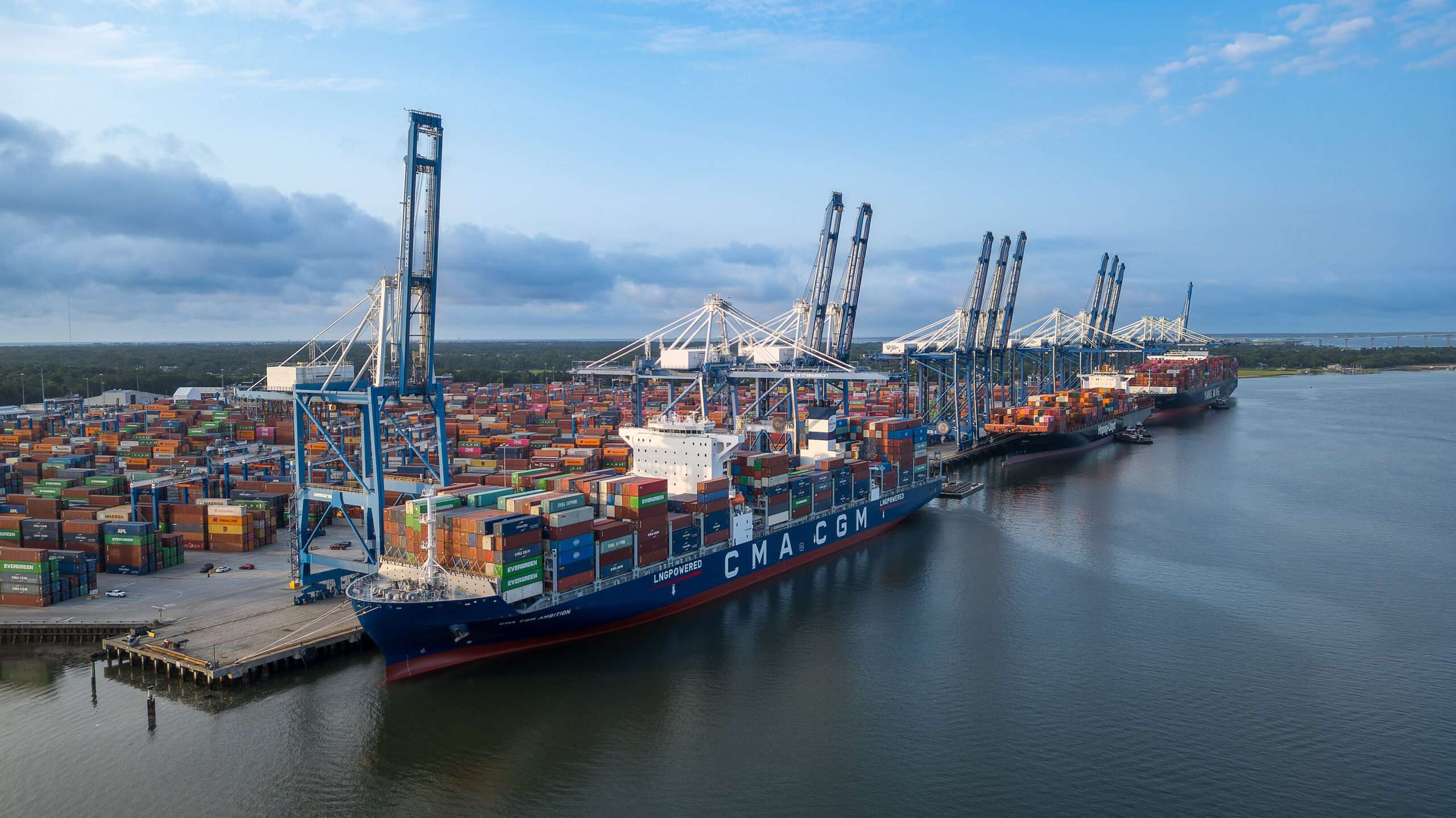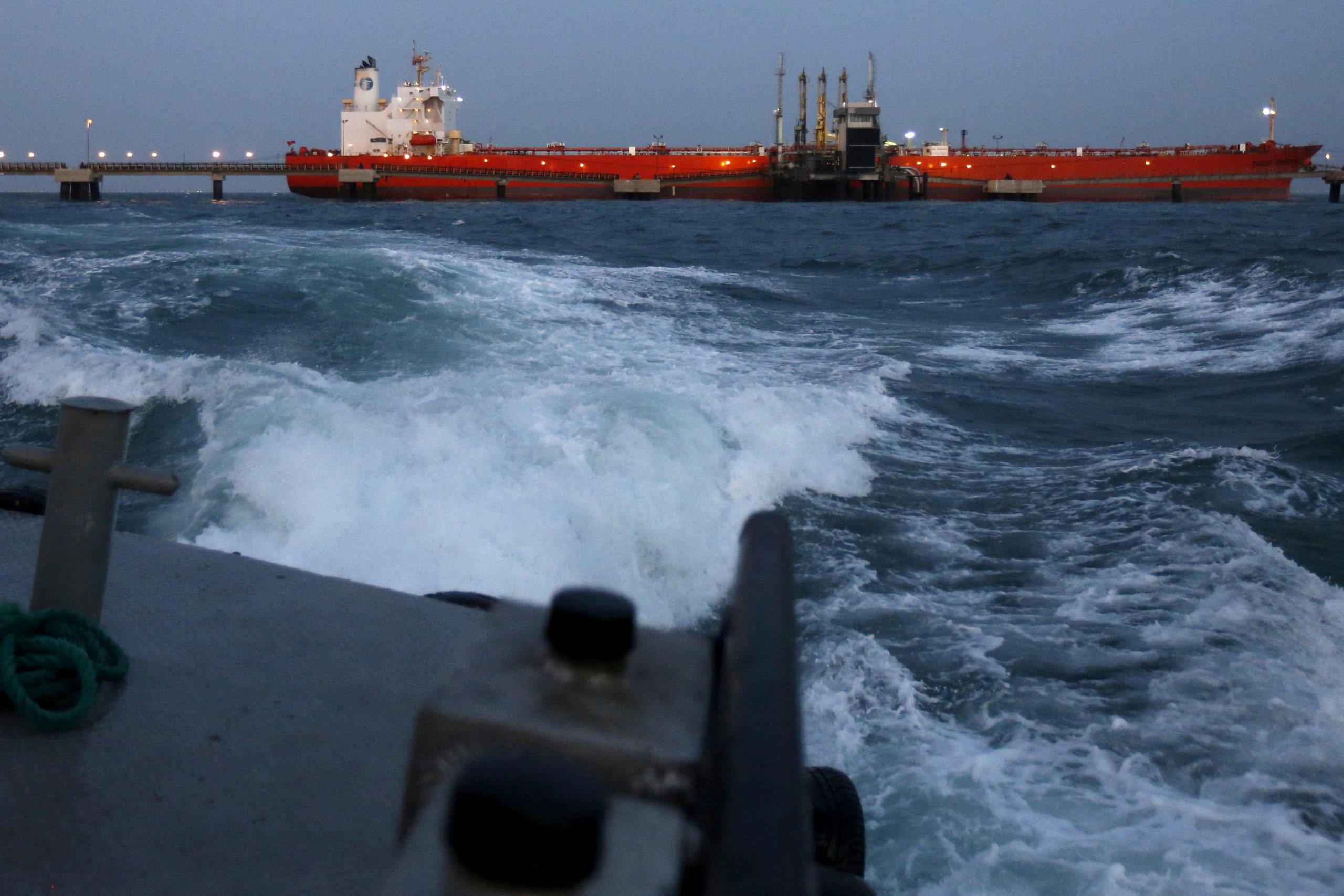By Gavin van Marle (The Loadstar)
A prolonged strike on the US east and Gulf coasts could prove “toxic” to global container supply chains – and even if industrial action lasts only a few days, it is likely to have ramifications into 2025.
Xeneta chief analyst Peter Sand said today there were fears of a knock-on effect that ships being stuck at US east and Gulf coast anchorages waiting for a berth would have on the ability of carriers to maintain schedules across other trades.
Mr Sand said: “There are ships on the ocean right now carrying billions of dollars of cargo, heading to ports on the US sast and Gulf coasts.”
Indeed, according to a Loadstar analysis of vessel arrivals scheduled at the Port of New York and New Jersey in week 40 via the eeSea liner database, there are 39 containerships forecast to arrive next week – 28 of which are on schedule and 11 that were due to call this week but are running late.
According to eeSea’s liner schedules, the first vessel slated to arrive after the 1 October strike deadline is the 5,500 teu Monte Tamaro, deployed on the South America east coast-North America Tango service, jointly operated by Hapag-Lloyd and Maersk, due to arrive 4.15am at APMT’s Port Elizabeth terminal on what would be day one of the strike.
The OOCL Guangzhou, OOCL Chongqing and Seaboard Pioneer are also expected that day, and are all involved in transatlantic trades of some sort. A similar picture is expected at other US east and Gulf coast ports.
“These ships cannot turn back, and they cannot realistically re-route to the US west coast,” said Mr Sand. “Some may divert to ports in Canada, or even Mexico’s east coast, but the majority will simply wait outside affected ports until the workers return.”
He added: “The consequences will be severe, not only through congestion at US ports, but importantly these ships will be delayed returning to the Far East for the next voyage.
“A strike lasting just one week will impact schedules for ships leaving the Far East on voyages to the US in late December and throughout January,” he explained.
According to the latest US port throughput figures from maritime economist John McCown, the total value of goods that went across the country’s ports in August was $194bn, 50.6% of that taking place at the east and Gulf coast.
According to Mr McCown’s analysis, around 16% of the global container shipping fleet is deployed on services to the US east and Gulf coasts, which he noted “is twice the overall industry capacity reduction from the Red Sea situation”, and he argued that the economic impact on US importers and exporters, as well as the country’s wider economy, made the probability of a prolonged strike less than some fear.
“It is the cataclysmic economic impact of a broad Maine-to-Texas strike that, in my view, makes it unlikely, as that would force President Biden to invoke Taft-Hartley [the 1947 legislative act], requiring the union to end the strike.
“Neither the union nor the administration is interested in going down that path. I anticipate a more limited action against selected ports and terminals. While these could be highly disruptive, it is doubtful they would be enough to invoke Taft-Hartley,” he wrote in his latest monthly analysis.
Mr Sand also said some form of government intervention was increasingly likely.
“To stop trade entering the US on such a large scale, even for short period of time, is highly damaging to the economy, so government intervention will be needed to bring the matter to a resolution for the good of the nation.
“Government intervention should be seen as a strength in the system, because it will prevent a dispute between a smaller group of interests – whether that is dockworkers or port terminal owners – from significantly impacting the wealth of the entire nation.
“If the parties cannot solve the dispute themselves, then someone needs to solve it for them, because closing the US east and Gulf coasts to trade for a prolonged period would be toxic for supply chains and the economy,” he argued.
The Loadstar is known at the highest levels of logistics and supply chain management as one of the best sources of influential analysis and commentary.

 Join The Club
Join The Club











